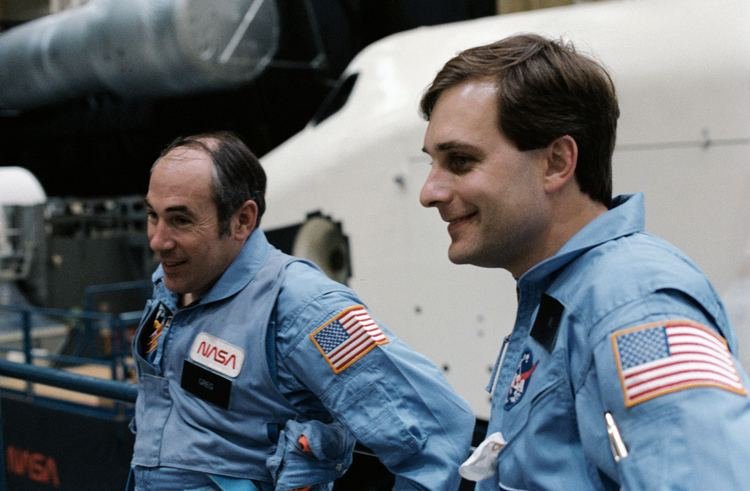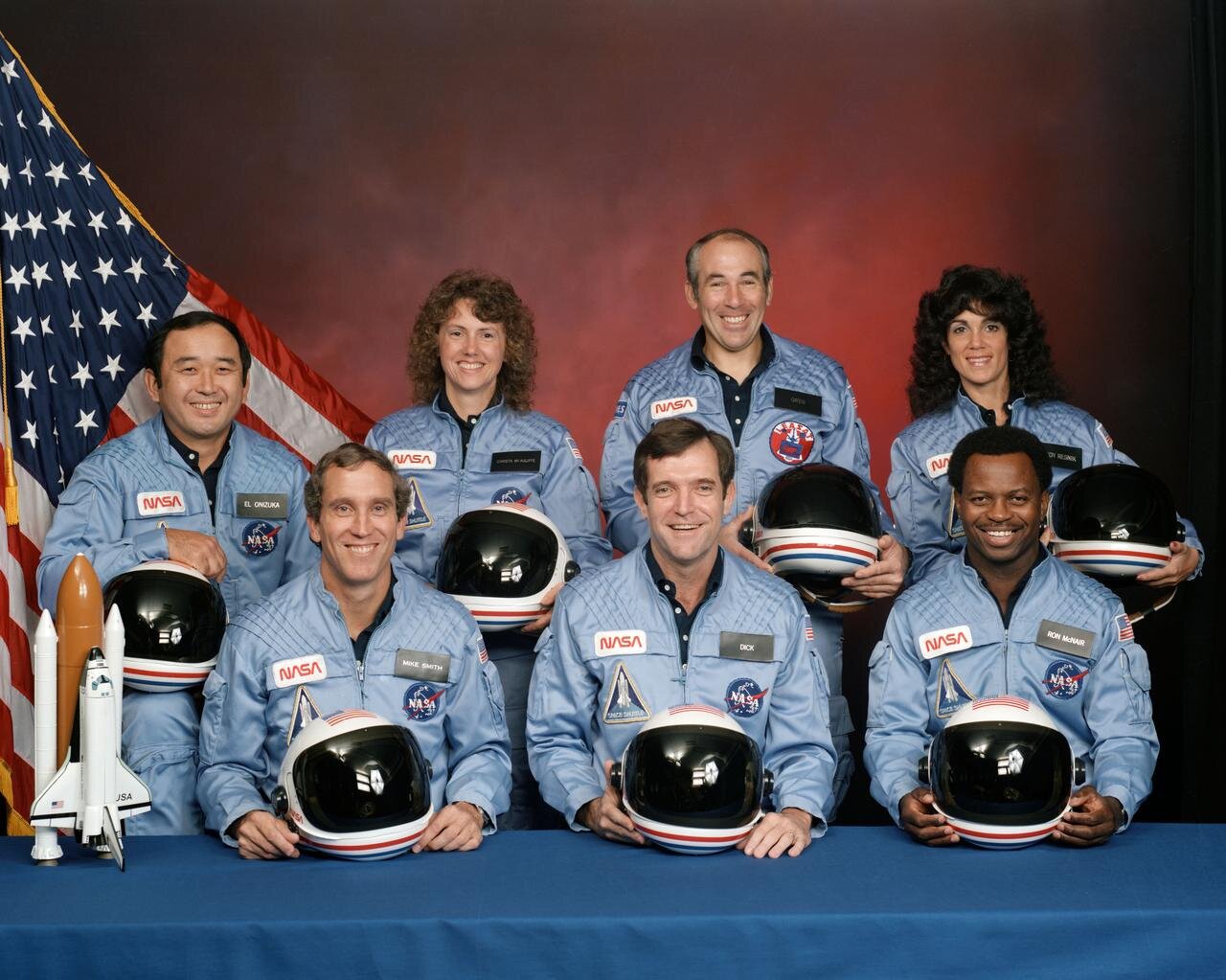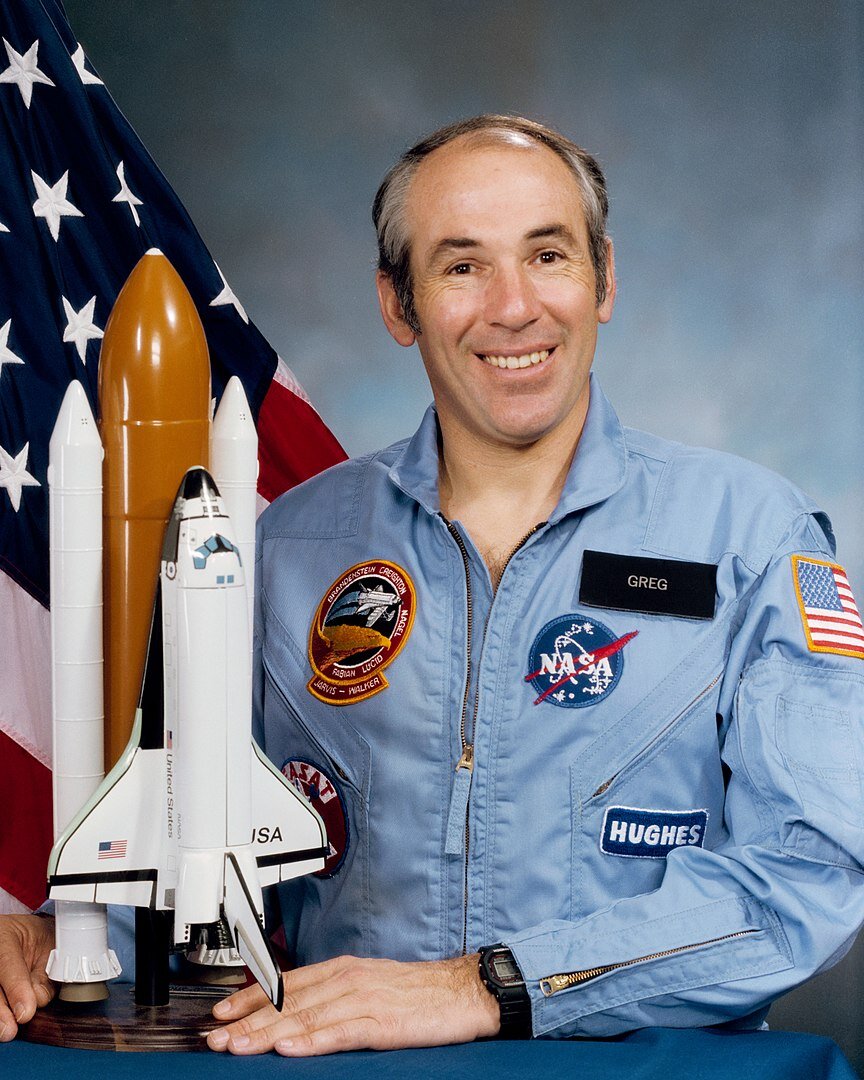Gregory B. Jarvis
Education
Jarvis graduated from Mohawk Central High School (later renamed to Gregory B. Jarvis High School, which eventually became the Gregory B. Jarvis Middle School in his honor), in Mohawk, New York, in 1962. He received a Bachelor of Science degree in electrical engineering from the State University of New York at Buffalo in 1967, and a Master of Science degree in the same discipline from Northeastern University in 1969.[1] Jarvis joined the United States Air Force the same year and served until 1973, when he was honorably discharged as a Captain. Thereafter, Jarvis worked for Hughes Aircraft.
Space Shuttle Challenger disaster
In June 1984, Jarvis was one of two Hughes Aircraft employees selected as candidates for the Space Shuttle program.[2] He planned to conduct experiments regarding the effects of weightlessness on fluids. Jarvis was originally scheduled to make his shuttle flight in April 1985, but his spot on that flight was replaced by U.S. senator Jake Garn. Jarvis' flight was rescheduled for early January 1986, but he was again replaced – this time by U.S. representative Bill Nelson.[1][2]
Jarvis was payload specialist 2 on STS-51-L which was launched from the Kennedy Space Center, Florida, at 11:38:00 EST on January 28, 1986. The crew on board the Orbiter Challenger included Commander Dick Scobee, pilot Michael J. Smith (USN), mission specialists Dr. Ronald McNair, Lt. Col. Ellison Onizuka (USAF), Dr. Judith Resnik, and fellow civilian payload specialist Christa McAuliffe. The entire STS-51-L crew died when Challenger broke up during launch.
The remains of all seven astronauts from the Challenger disaster were discovered in the crew decks on the ocean floor. Jarvis' body was discovered in the lower mid-deck along with McNair and McAuliffe. During salvage operations to raise the crew deck from the ocean floor, Jarvis' body escaped from the wreckage, floated to the surface, and disappeared back into the sea. On April 15, 1986, on the last scheduled attempt to recover wreckage, it was rediscovered and returned to shore.[3][4] Jarvis was cremated and his ashes scattered in the Pacific Ocean.
Awards and honors
The East Engineering building on University at Buffalo (SUNY) north campus was renamed Jarvis Hall after Jarvis' death. In Spring of 1986, when the university had not yet named the building in his memory, four students scaled the building and nailed a sign with the name "Jarvis Hall" onto the side of the building as a show of support for the deceased astronaut. In 1987, the name was made official with a dedication ceremony. Jarvis Hall is devoted largely to Aerospace Engineering and engineering support services.[5]
Mohawk Central High School in Mohawk, NY was renamed Gregory B. Jarvis Jr/Sr High School. It is now the Gregory B. Jarvis Middle School of the Central Valley Central School District.
A sculpture by SUNY at Buffalo faculty member emeritus Tony Paterson entitled "Jarvis Memorial" was commissioned by SUNY at Buffalo to honor Jarvis, and is currently in the SUNY at Buffalo art collection.[6]
Jarvis was portrayed by Richard Jenkins in the 1990 TV movie Challenger.
In 2004, Jarvis was posthumously awarded the Congressional Space Medal of Honor.
The hydropower-producing dam on Hinckley Lake, NY, operated by the New York Power Authority, is named the Gregory B. Jarvis Dam.
About Space Shuttle Challenger
Space Shuttle Challenger (OV-099) was a Space Shuttle orbiter manufactured by Rockwell International and operated by NASA. Named after the commanding ship of a nineteenth-century scientific expedition that traveled the world, Challenger was the second Space Shuttle orbiter to fly into space after Columbia, and launched on its maiden flight in April 1983. It was destroyed in January 1986 soon after launch in an accident that killed all seven crewmembers aboard. Initially manufactured as a test article not intended for spaceflight, it was utilized for ground testing of the Space Shuttle orbiter's structural design. However, after NASA found that their original plan to upgrade Enterprise for spaceflight would be more expensive than upgrading Challenger, the orbiter was pressed into operational service in the Space Shuttle program. Lessons learned from the first orbital flights of Columbia led to Challenger's design possessing fewer thermal protection system tiles and a lighter fuselage and wings. This led to it being 1,000 kilograms (2,200 pounds) lighter than Columbia, though still 2,600 kilograms (5,700 pounds) heavier than Discovery.
During its three years of operation, Challenger was flown on ten missions in the Space Shuttle program, spending over 62 days in space and completing almost 1,000 orbits around Earth. Following its maiden flight, Challenger supplanted Columbia as the leader of the Space Shuttle fleet, being the most-flown orbiter during all three years of its operation while Columbia itself was seldom used during the same time frame. Challenger was used for numerous civilian satellite launches, such as the first tracking and data relay satellite, the Palapa B communications satellites, the Long Duration Exposure Facility, and the Earth Radiation Budget Satellite. It was also used as a test bed for the Manned Maneuvering Unit (MMU) and served as the platform to repair the malfunctioning SolarMax telescope. In addition, three consecutive Spacelab missions were conducted with the orbiter in 1985, one of which being the first German crewed spaceflight mission. Passengers carried into orbit by Challenger include the first American female astronaut, the first American female spacewalker, the first African-American astronaut, and the first Canadian astronaut.






